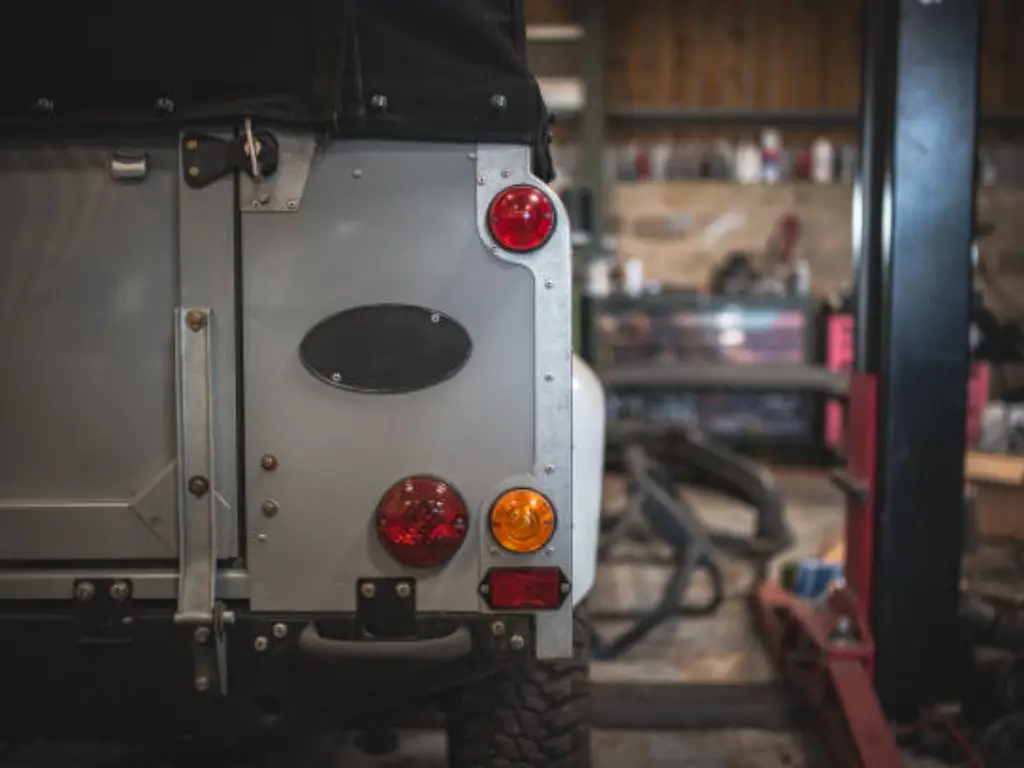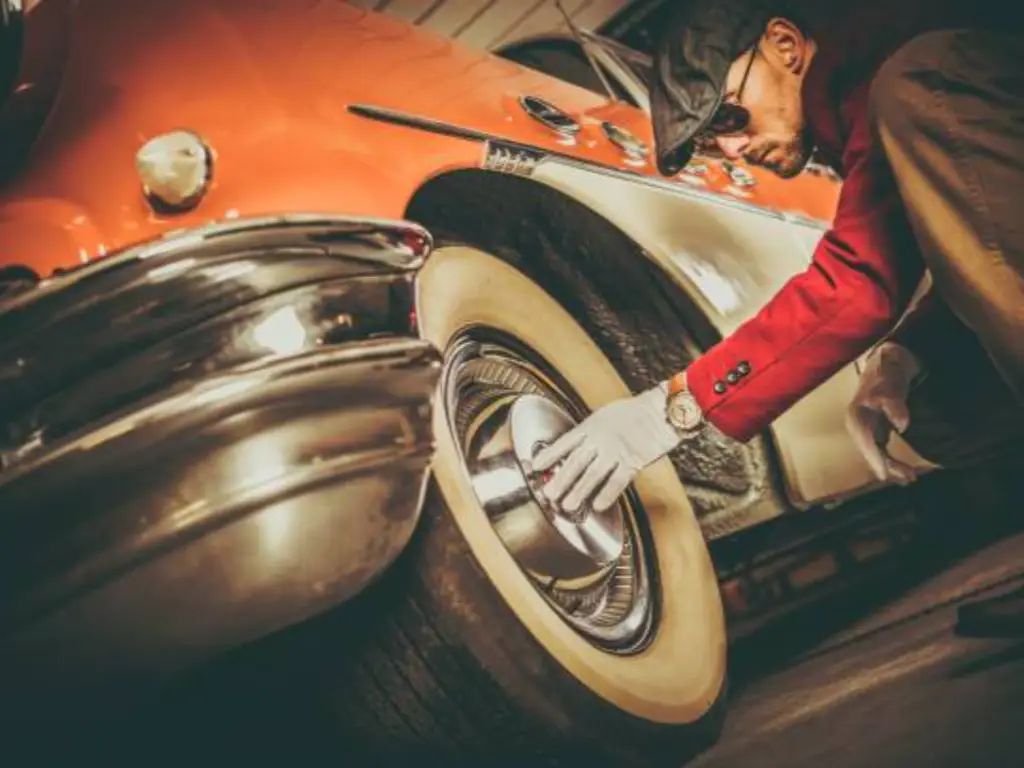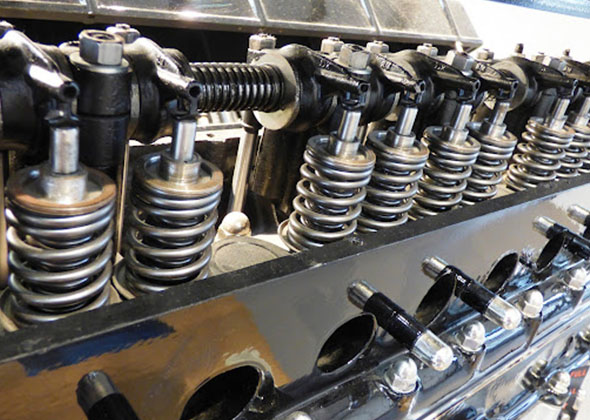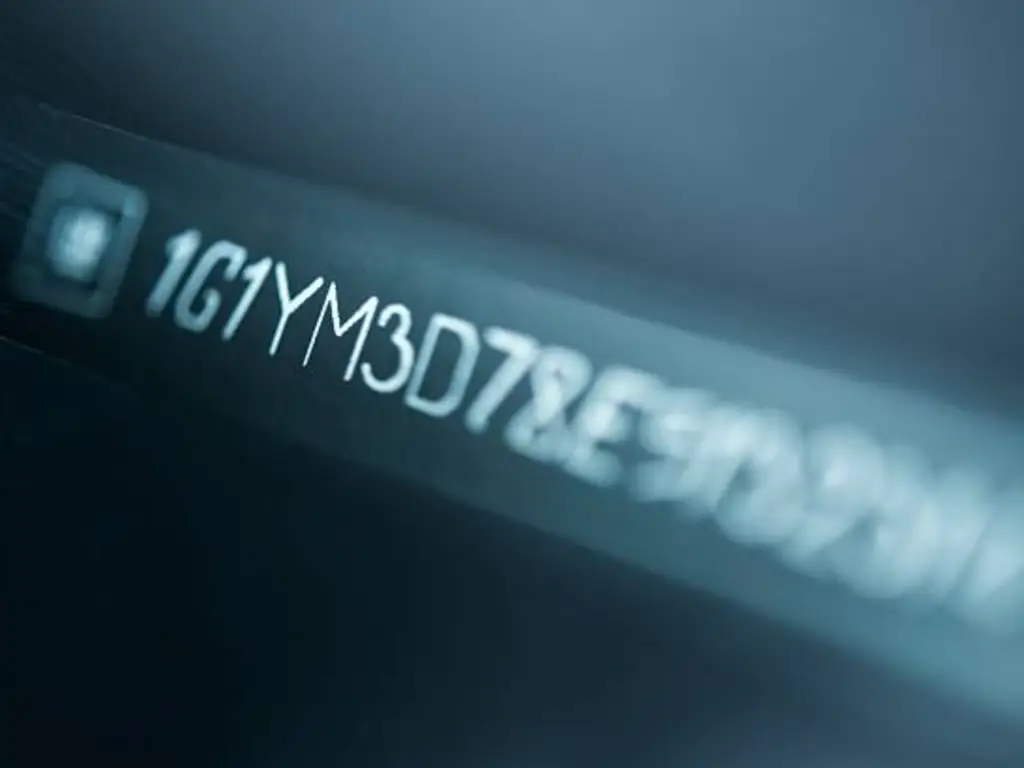
Have you ever stood in line at the DMV, insurance office, and auto shop and been asked to provide them with your chassis number, and you stare at them as if that is the same as the long VIN written on your dashboard? Or maybe you are in your garage, and your hands are dusty, and you are looking at a car frame, a vintage one, and you are looking at a string of digits, short and cryptic, that has been impressed into the metal.
These two scenarios lead to one more basic concept: a motor vehicle has its own identity, a unique code. However, the route between that short, stamped number and the 17-digit standard I am used to today is a tale of produce, globalization, and information in the automotive industry.
This manual will be a demystifier of the chassis number. We are going to discuss what a modern car is, where it can be found, and why it is important. But better to step into the narrative ahead of the 17-digit number VIN–a world that classic automobile lovers and restorers are too familiar with, when every manufacturer of the vehicle had its own notation system long before the standard was put into effect.
The Simple Answer: Is a Chassis Number Just a VIN?
The answer is yes to the vast majority of people who have a car manufactured after 1981.
The chassis number is commonly referred to as VIN (Vehicle Identification Number). This is particularly prevalent in the UK, Australia, and other Commonwealth countries. VIN is nearly the only term that is used in North America.
They are functionally the same: a special alphanumeric code that consists of 17 digits that are used to name your car and store such useful records as manufacturing information, safety history, and registration records.
The actual difference, and that which is relevant to automotive history, is not the name but the format. VIN is a global standard (ISO 3779), which became fully adopted in 1981. Before this, the manufacturers used non-standardized systems of their own. It is that number, the number before 1981, which many purists and restorers call the real chassis number.
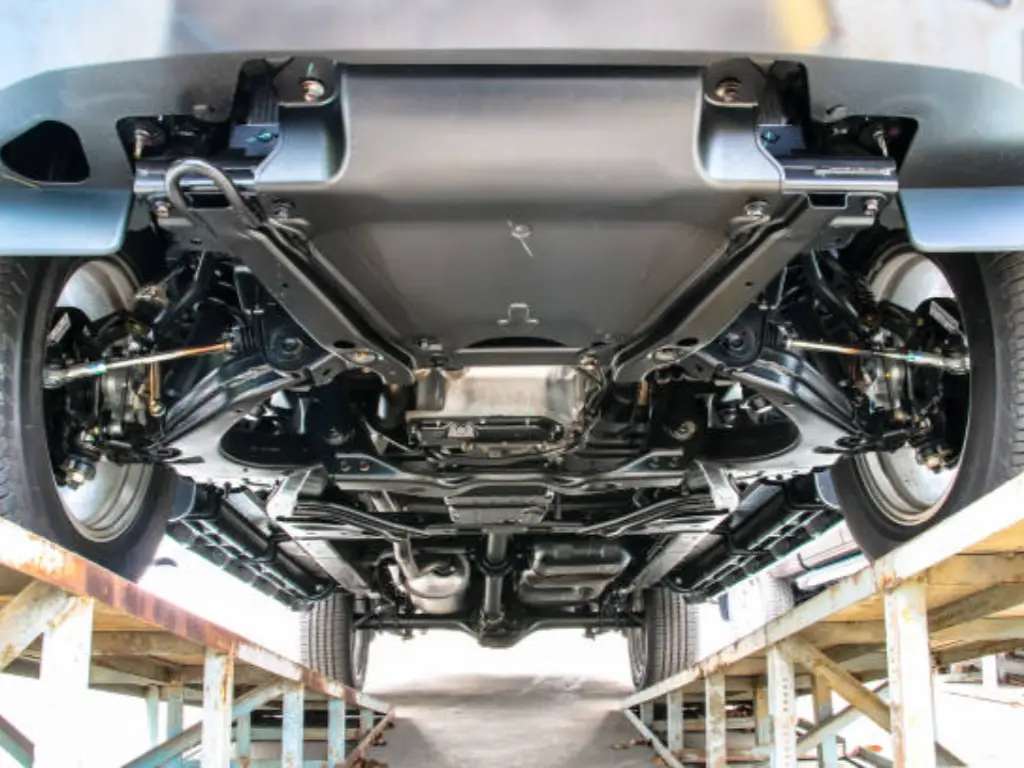
Where to Find the Chassis Number / VIN on Your Vehicle
The identity code of your car is found in a number of places, and this makes it impossible to lose the code even when one section of it is destroyed. These are the most popular places to visit.
On the Vehicle Itself:
- The Dashboard: It is the most frequent position. Peep through the driver’s windshield, just at the spot of the dashboard and the window. A little plate of metal with the 17-digit number will be seen.
- The Driver’s Side Door Jamb: Open the driver’s side door and observe the door frame close to the driver’s side latch. A sticker or plate with the VIN and tire pressure information, gross vehicle weight, and manufacturing date will be found there.
- The Engine Bay: open the hood of the vehicle and examine the firewall (the metal wall that divides the engine and the interior of the car). This number is frequently impressed directly into the metal or on a plate attached to the same.
- The Frame (Trucks & Classics): On body-on-frame trucks, or classic cars, the number may be stamped into the main frame rail, typically in the engine compartment or under the cab.
- The Trunk: This is not as common as the others, yet there are times when the VIN is stamped on a plate, or drilled into the floor pan beneath the spare tire or the carpet.
On Your Documents:
- Vehicle Registration Card
- Vehicle Title (Proof of Ownership)
- Insurance Policy Documents
- V5C Logbook (in the UK)
- Repair and Service Records
Always ensure that your paperwork matches the number that is on the ground on your vehicle, particularly when acquiring a used car, as this is to ensure that all valuable information about your car’s identity is right and can be verified.
Why This 17-Digit Code Is Your Car’s Most Important “Fingerprint”
That number of 17 digits is much more than a chance serial number. It is the most important piece of data of your vehicle, and it is the one that is the most crucial, as it is utilized by all people, including manufacturers and law enforcement.
- Legal Identity: The VIN is your car’s legal name.. It is necessary to title, register, and pay taxes. It is the sole means through which the government can establish that you are the legitimate owner of that particular vehicle.
- Safety Recalls: This is, perhaps, its most important role in providing the safety of the people. A manufacturer finds out that one of their vehicles has a defect, whether it is their faulty airbags or a possible fire threat, they do not recall all their past cars. The VIN will help them determine the specific lot of defective vehicles. The National Highway Traffic Safety Administration (NHTSA) supervised more than 34 million vehicles in 2023, issuing more than 900 recalls. The instrument of making this life-saving accuracy a possibility is the VIN.
- Theft Recovery: In case of car theft, police put the VIN in databases at the national and international levels. This fingerprint helps the car to be recognized, even when thieves alter the license plates or paint. National Insurance Crime Bureau (NICB) states that in 2023, more than 1 million vehicles were stolen in the U.S., and the VIN is the main instrument used to recover stolen cars.
- Vehicle History Reports: Proposals such as the CarFax and AutoCheck operate purely using the VIN. When entering this number, a prospective buyer will have access to all the vehicle’s history of the car, including:
- Accident reports
- Mileage verification (odometer fraud)
- Service records
- Title status (e.g., salvage, flood, or lemon title). Studies show that as many as 25% of cars on the road have a “branded” title, and the VIN is the key to discovering this.
- Parts and Service: When you enter an automobile parts store, they ask the initial question, ” What is your VIN? ” This enables them to query a database and locate the specific part required on your particular sub-model, type of engine, and trim level, therefore ruling out guesswork.
The Great Divide: What Happened in 1981?
All automobile companies have been in silos for decades. A Ford chassis number was different from a Volkswagen one, which was different from a Chevrolet one. It was not consistent at all; thus, international tracking, parts sourcing, and regulation were a nightmare.
Then came 1981. This is the year of the great divide in the history of automotive.
The U.S. National Highway Traffic Safety Administration (NHTSA) responded to the impact of globalization and the necessity to maintain an improved data management community by issuing a standardized 17-digit format to all vehicles sold in the nation. It was founded on the ISO 3779 standard that was rapidly embraced by manufacturers all over the world.
It was a new 17-digit VIN system that transformed the industry. It imposed a standardized vehicle identification language. In the first instance, a code could immediately identify what the car is made of, where it was assembled, what model it is, what year it was manufactured, and what its unique serial number is, whether the car was produced in Detroit, Tokyo, or Stuttgart.
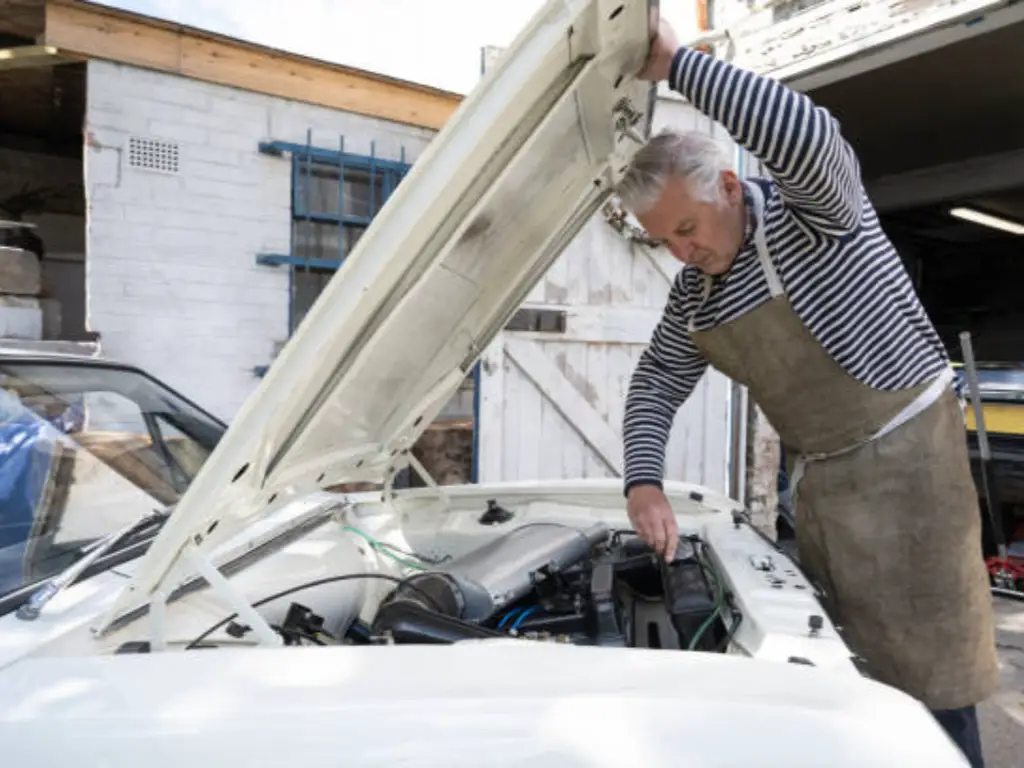
The “True” Chassis Number: Identification Before the 17-Digit VIN
The automotive world was not what it used to be before 1981. The “chassis number” was just that, a number that the manufacturer stamped on the body or the chassis, according to his own logic, crucial for sourcing spare parts. This is where the plot becomes exciting, particularly to the owners of classic cars.
The “Wild West” of Pre-VIN Stamping
Should the 17-digit VIN be a passport of data richness, there was a pre-1981 handwritten note as the chassis number. It was disorderly, uneven, and frequently obscure.
- Inconsistent Length: A chassis number may be 8, 10, 11, or any other number of digits that the manufacturer chose that year.
- Diverse Information: There were different serial numbers that are just sequencing numbers. Some, such as the Ford Mustang of the 1960s, were more descriptive, with code using the body style, engine, and assembly plant.
- Proprietary Numbers: A 1965 Ford Mustang chassis number (e.g., 5F07K100001) was a complicated code, whereas a 1965 Volkswagen Beetle number (e.g., 115000001) was a simple 9-digit number.
- Hidden Locations: No standard was used for where the number was to be placed. It may be at the inner fender, firewall, chassis tunnel, or even at the steering box.
Why Your Classic Car’s Chassis Number Is So Much More Than a VIN
To a recent car owner, VIN is an administrative tool. To a classic car owner, the chassis number is the birth certificate of the vehicle and the soul.
It is the only method of verification of numbers-matching, which is the procedure to check whether the car still has its original power engine and transmission, which was installed by the factory. This may be the disparity of tens of thousands of dollars in the value of a vehicle.
This small series of numbers is a Rosetta Stone. A knowledgeable amateur or expert will examine a 10-digit pre-VIN chassis number and inform you where it was actually assembled in the factory, what engine it originally had, what color it was painted, what trim package it had, etc. It is the essence of the history of the car.
As an example, we will consider a simplified dissection of the chassis number of a 1965 Ford Mustang:
| Example: | 5 | F | 09 | C | 100001 |
| Meaning: | Model Year | Assembly Plant | Body Style | Engine Code | Consecutive Unit # |
| Decoded: | 1965 | Dearborn, MI | Convertible | 289ci V8 | First unit built |
Such a degree of embedded detail, which ranged horribly across brands, is what makes pre-VIN chassis numbers a very interesting and challenging discipline to study.
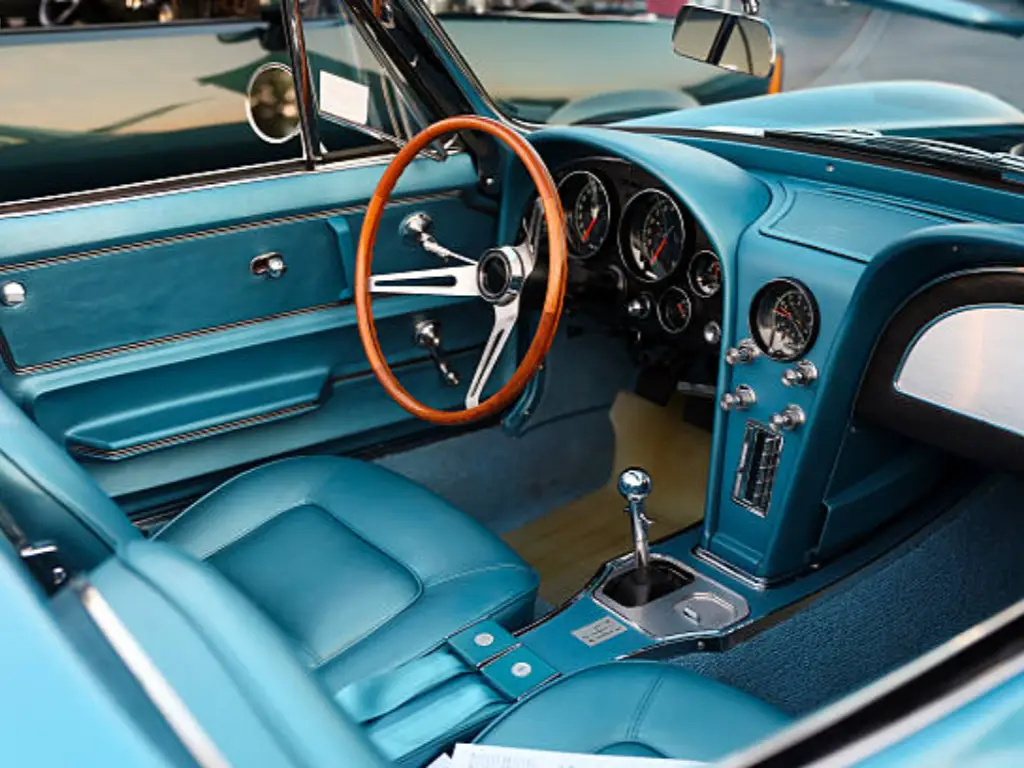
The Classic Car Owner’s Dilemma: Finding Parts for a Pre-VIN Number
This pre-1981 complexity creates a massive modern problem. If you own a classic car, you can’t just walk into a parts store and give them your chassis number. Their systems aren’t built for it.
Why Modern VIN-Based Catalogs Fail Your Classic Car
You type in your 10-digit chassis number of the year 1967, and the answer you get is one: invalid VIN.
The 17-digit VIN is the reason why the entire global auto parts infrastructure has been developed in the past 40 years. The databases that drive parts stores, Internet stores, and even insurance firms cannot count a pre-1981 number.
This puts classic car owners and restoration shops in a dilemma. You must deal with dusty, out-of-print paper catalogs, obscure web forums, and speculation. You order components that may possibly fit, only to discover that it is a different model year or sub-model, and thus, you end up wasting time and money.
Sunway Autoparts: Where Your Classic Chassis Number Is the Key, Not the Problem
This is what we constructed our business to achieve. In Sunway Autoparts, we feel this pressure since we are in that pre-VIN world daily.
Since 2007, we have been specializing in the production and supply of parts to classic cars, mostly those between the years 1920s to late 1990s of brands including Ford, Volkswagen, Chevrolet, and others.
When a modern catalog encounters an invalid number, we encounter a key. We have our databases and our knowledge that is based on these original chassis numbers. We would be happy to crack the pre-VIN stamp and align it to your precise requirement in a component.
But we have made a very important step. It is not just a matter of finding parts, but rather it is about quality parts. NOS parts, including original parts, are usually worn down over decades during storage.
We are a specialist manufacturer, which is our advantage. We offer duplication components that are in conformance with the original OEM specifications, only strengthened with high-quality materials and processes. This provides you with the genuine fit of the original component and the reliability and durability of a contemporary component.
In the case of our restoration shops and parts distributors partners, we act as the stable upstream solution. We have a supply chain comprising almost 200 suppliers that enables us to source and produce hundreds of product categories. By coming to us, you will be able to enjoy the benefits of consistency in quality, assurance in stock, and a mutual understanding of the language of the classic-era chassis numbers.
A Quick Guide to Decoding the Modern 17-Digit VIN
While classic numbers are our passion, it’s still vital to understand the modern 17-digit VIN. This code is brilliantly logical and breaks down into three simple sections.
| Section | Digits | What It Is | What It Tells You |
| WMI | 1-3 | World Manufacturer Identifier | Digit 1 is the country of origin (e.g., 1=USA, 2=Canada, J=Japan). Digits 2-3 identify the specific manufacturer (e.g., F=Ford, C=Chevrolet, H=Honda). |
| VDS | 4-8 | Vehicle Descriptor Section | These 5 digits are the manufacturer’s code for the car’s model, body style, engine type, transmission, and safety features. |
| VIS | 9-17 | Vehicle Identifier Section | This is the car’s unique serial number. Digit 9 is a “check digit” to verify the VIN’s authenticity. Digit 10 is the model year (e.g., C=2012, D=2013). Digit 11 is the specific assembly plant. Digits 12-17 are the car’s unique serial number. |
What to Do If Your Chassis Number is Missing or Damaged?
A chassis number is a big issue, whether it is missing or cannot be read either whether it is modern or classic. There is nothing to panic about, and the following are the actions to be taken.
- Check All Locations: As given above, the figure appears in several places. When the dashboard plate is damaged, there is no evidence that the door jamb sticker or frame stamping is missing.
- Check Your Paperwork: The first thing to do is to check your title, registration, and insurance papers. These legal papers should be of the correct number.
- Check Frame Stamps: On an older car, the number is frequently pressed or engraved into the frame. It can be sprayed with grease, rust, or paint. It could be uncovered with a careful cleaning using a wire brush and solvent.
- Find a Specialist or Club: In the case of classic cars, this will be the most appropriate recommendation. There is a marque-specific enthusiast club (such as the Mustang Club of America or the Vintage Volkswagen Club) whose gurus are aware of the location that particular model and year received its secondary or secret numbers. This service can also be offered in a professional restoration shop.
Conclusion
The most significant thread in the history of a car is the chassis number. It has risen out of a basic factory stamp to a potent world data standard that ensures safety, ownership verification, and that it gathers a trillion-dollar automotive sector.
It is the official name of your car, its history, and its fingerprint.
Knowing this number will be the initial step to knowing your vehicle. It is that code that unlocks 17 digits to the character VIN on your daily driver to see whether there is a recall, or 10 digits to the chassis number on a classic passion project to see that one perfect part. And when you are passionate about the classics, be aware that there are experts in that, like Sunway Autoparts, who still know that old, pre-1981 language.

